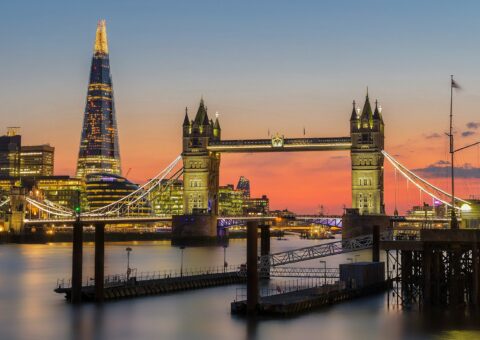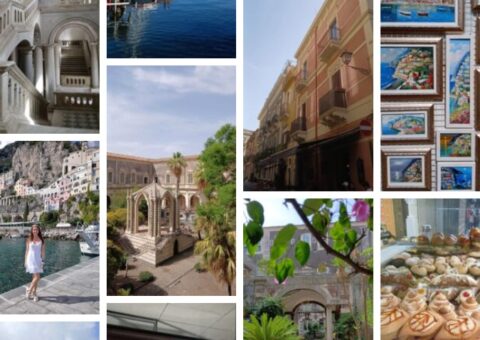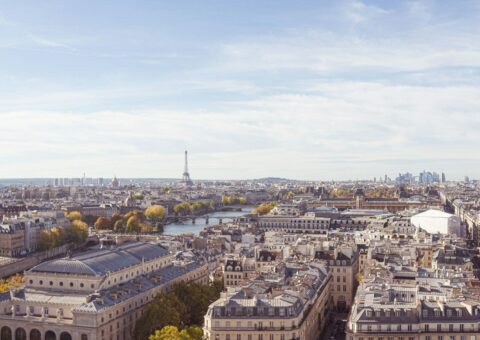Your Guide to Public Transport in London
Coming up in this guide: cheap bikes, friendly faces, billions of journeys, river cruises, money-saving hacks, some surprising facts and stats, and everything you need to know about public transport in London.
London’s public transport is some of the best on the planet.
Made up of underground trains, overground trains, buses, trams, hirable bicycles, boats, taxis, and more, it’s massive and extensive. One of the busiest public transport systems in the world, millions of journeys are taken here every day.
… so, if you’re gonna be spending time in London, the city’s public transport will inevitably become a big part of your life.
But how do you use it? Where do you find maps? How do you pay? Are there any apps you need to download? Which types of transport are the most common? What is the Tube? And just how many questions can one paragraph ask about one city’s public transport?
Coming up, all that and more: today, Homelike are bringing you everything you need to know about public transportation in London!
The London Underground
Quick piece of info, before we get going: yes, the London Underground and ‘the Tube’ are exactly the same thing.
A massive underground network of well-connected and regularly-running trains, the Tube handles up to five million journeys per day—during peak hours, more than 500 trains are running at any one time. And it’s the world’s oldest underground railway network.
The network is made up of 11 lines, 272 stations, and 402 kilometers (250 miles) of tracks.
Fun fact: although most people think of the Tube as being fully underground, around half its network is actually overground.
The Tube is very easy to use. Here’s a map—and you’ll find physical maps at all stations (and on all trains). Fees are worked out according to which ‘zone’ you travel in, and can vary hugely. If you’re traveling within central London, expect to pay around (or less than) £4 for one journey.
15 years ago, you needed a travelcard or cash to use most public transport in London (these travelcards are known as ‘Oyster Cards’). But now, everyone just uses their contactless debit card instead, cos wants to carry two cards when you can just carry one?
These days, the only people who use Oyster Cards are tourists who don’t have a UK bank account.
You can pay with cash at a small number of stations, but it’s much more expensive to do so.
Every time you enter a station, tap in on the yellow card reader you’ll see. And every time you leave a station, tap out (again, on the yellow card reader). The fee will then be automatically deducted from your balance.
Important life note: the Tube covers London pretty extensively, but pretty much doesn’t exist in Southeast London, where overground transport and buses (more on both soon) are much more common.
… so that’s something to consider when looking for your London apartment!
On the topic of apartments: getting one in London can be TOUGH. Local landlords overcharge newcomers, you have dozens of neighborhoods to choose from, and organizing bills and utilities is often a big fat challenge. So if you want fuss-free trouble-dodging apartments in London, or short-term rentals in London, we have both!
They’re all ready to move into today, they’re all comfy and cozy, and you don’t need to organize any bills, utilities, or furniture. Easy.
Anyway, enough of all that: back to the transport!
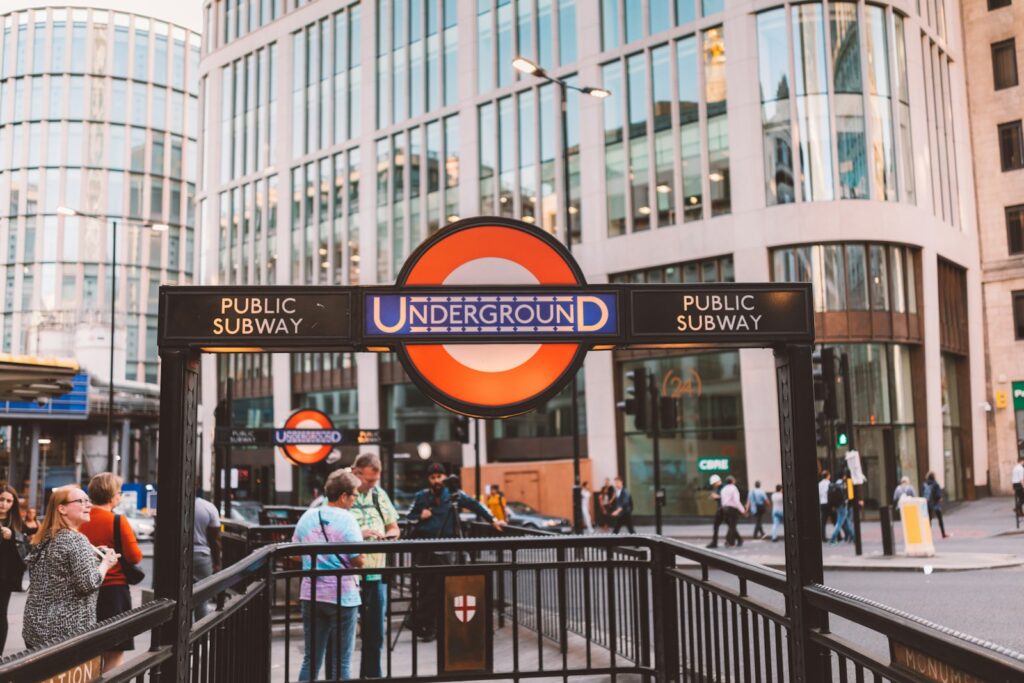
The London Overground
The London Overground is basically just like the Tube, but exclusively overground, and not quite as busy or extensive. It covers 6 lines, and 113 stations. It’s a bit more comfortable than the Tube, and not so sweaty.
It reaches some of the outskirts that the Tube doesn’t—and also offers a ring around central London.
Just like The Tube, you tap in when you enter a station, and tap out when you leave a station.
Important note for all types of transport: you must tap in and out on ALL types of transport. If, for example, you get off the Tube, but then get on the Overground… you must tap OFF the Tube, and tap ONTO the Overground. And you must always tap on and off, even if the entry/exit gates are open—or if there aren’t any entry/exit gates.
Like pretty much all the transport still to come in this guide, The London Overground connects with many Tube stations (and other types of public transportation in London).
Docklands Light Railway (DLR)
The Docklands Light Railway is another type of overground train. It covers parts of east and south-east London, and has 3 lines and 45 stations. The vehicles are completely driverless (fancy!).
Again, it connects up with other modes of transport, and you tap on and off.
Rail Services in London
The UK’s railway service is massive…
… and London alone is home to around 15 railway stations (fun fact: nine out of ten of the UK’s busiest railway stations are in London!).
But the vast majority of the time you’re using a London train, you’ll likely be using it to travel further afield (like another city or whatever).
The UK’s railway network is known as ‘National Rail,’ but none of the trains are owned by National Rail; instead, they’re all owned by different private companies. You can buy tickets at stations, or on the individual company websites. But the best place to find the cheapest deals is Trainline, which is sort of like Skyscanner for trains.
Money-saving hack: the UK has an excellent railcard scheme. With most railcards, each train ticket you buy is reduced by 33%. Bargain! There are 9 different types of UK railcards, so you’ll probably be able to get one that applies to you.
Buses
London is home to more than 8,000 buses, around 700 different routes, and almost 20,000 different bus stops…
… and buses account for more public-transport London journeys than any other form of transport.
According to the official London buses site, “95% of Londoners [live] within 400 meters of a bus stop.” So you might use buses more than you expect!
There are no tickets. Instead, you tap your contactless card on the card reader when you enter the bus. You don’t tap off when you get off the bus. One bus journey costs £1.75, no matter how far you go—and if you take other bus journeys within the same hour, they’re free. The daily cap for bus journeys is £5.25, no matter how many journeys you take.
London also has just under 100 night-bus routes (compared to the 700 day routes). Here’s more.
You can also take long-distance buses, for traveling to other cities: it’s the best way to travel long-distances affordably (though even direct journeys are often 20%-40% slower than the equivalent train journeys). The two best-known long-distance bus journey operators are Megabus and National Express.

Trams
Of all the public transport in London, trams are among the least-known.
As you can see here, there’s only two lines, they mainly service west London, and there are fewer than 40 stations.
Like with buses, you tap on when you enter a tram, but don’t need to tap off when you leave the tram.
Cycling in London
Cycling in London is very popular, and the routes and infrastructure are excellent. Around 1.2 million journeys are taken by bicycle every day (and many London locals get around exclusively by bicycle).
It’s best to have your own bike.
If you don’t have one, use Santander Cycles:
These easy-to-hire basic-but-rideable bicycles are dotted around 800 different locations in the city, and there are 12,000 of them in total. To use them, you head to a docking station, pay at the machine (with a card), take your bike, and return your bike to any of the city’s other docking stations. Easy! The bikes have three gears, and they’re regularly maintained.
For planning cycle routes, both Google Maps and CityMapper are excellent. CityMapper in particular is known for its excellent suggestions—so get a phone holder for your bike, put one earbud in, and follow the CityMapper directions!
Around the city, you’ll also find signposted routes, specifically for cyclists.
Here are some safety tips for cycling in London:
- Remember: in London, people drive and cycle on the left-hand side.
- Get some lights: London gets lots of rain, and can be pretty gray—and in winter, the days are very short. You’ll need lights more often than you think. The Santander bicycles have lights installed on them.
- Lots of people walk in the cycle lanes (even though they shouldn’t): so watch out!
Although drivers are usually pretty courteous, they aren’t always. So don’t get complacent.
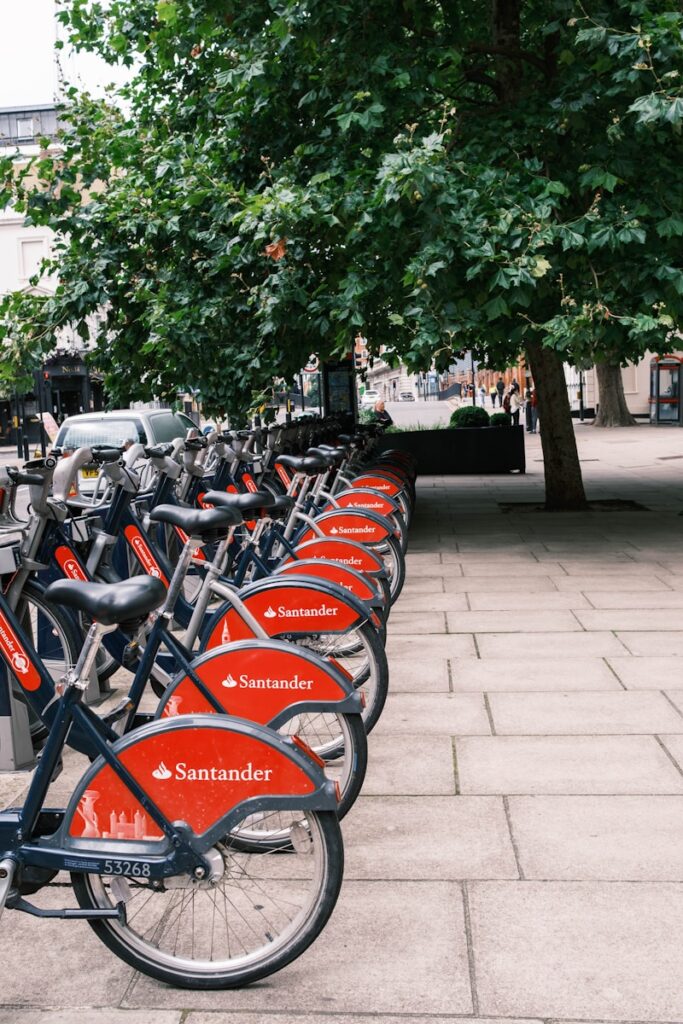
River Services
London is centered around the hefty Thames River, which cuts the capital in half.
You can ride across and along this river, using a bunch of different boat and ferry services. Some cross the river at specific points, while others run east and west along the river, allowing you to get off at many different stations.
Of all the public transport in London, these river rides are definitely the most fun.
Here’s a map of all the routes. Again, you tap on and tap off for each journey, and prices work on a zonal system.
Many river services are operated by Thames Clippers, who also offer on-river events (like comedy cruises and illuimated evening boat tours).
Taxis and Ride-Sharing
As you probably know, London has traditional black cabs (which let’s be honest, are basically just taxis).
When you use a black cab, you can pay in card or cash. The fares are metered—whatever fare is displayed at the end of the journey, that’s what you pay.
You find these black cabs on the street, and you can talk to the driver, or flag one down—just like you’ve seen people do in the movies about New York.
Fun facts: black cabs are also called ‘Hackney Carriages.’ And, weirdly, black cabs aren’t even necessarily black.
These days, most people just use Uber—it’s the UK’s most popular taxi-hailing app by a very long way. With Uber, you know the price of the journey before getting in the car.
Ridesharing: although public transportation in London is excellent and extensive, ridesharing really isn’t a thing here. Yep, BlaBlaCar functions in London, but very few people use it.
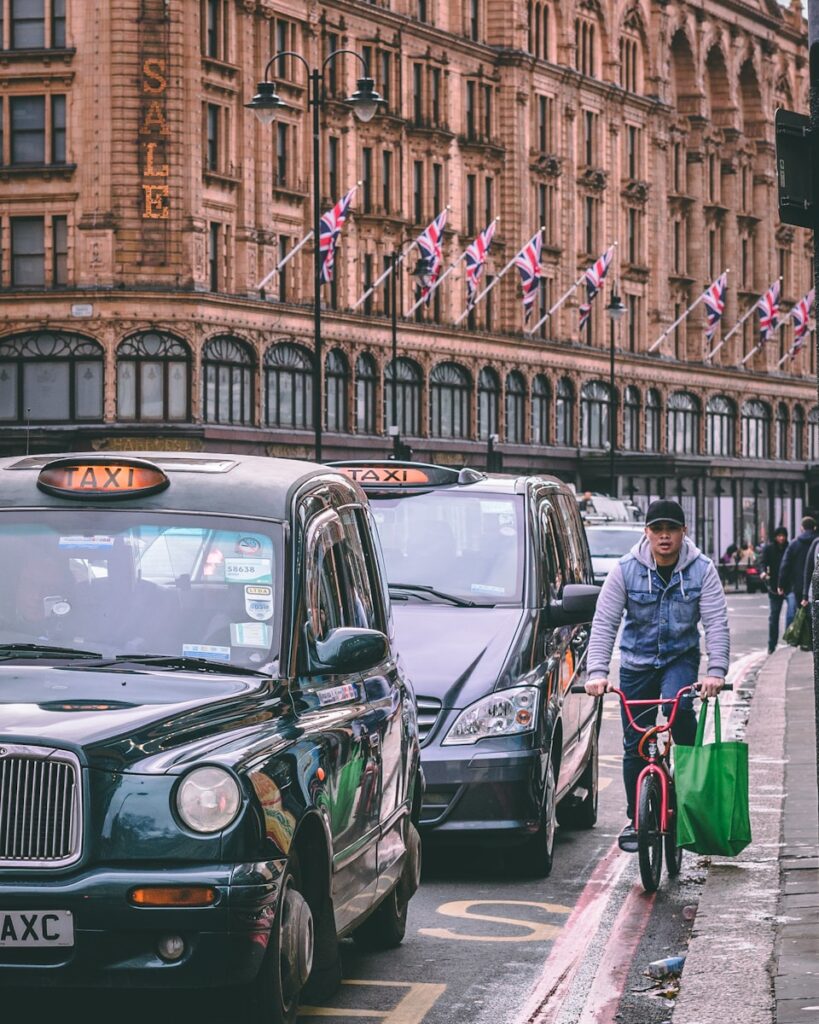
Public transportation in London: Accessibility
For the most part, public transport in London has excellent accessibility.
Here’s more detail. But in short:
- All buses are completely accessible, with ramps, and space for at least one wheelchair.
- Black cabs are always accessible.
- On the Tube Map, you can see which tube stations do and don’t have fully-accessible access. Those with an accessibility sign on the map are those accessible to everyone.
- Around 50% of overground stations are completely accessible—again, you can check which are and aren’t accessible by using the overground map.
- All National Rail trains are accessible. But you should contact your train provider in advance, to reserve an accessible spot on the train. Sometimes, on busy trains, these are fully occupied, or booked-out in advance.
- All of the DLR is completely accessible.
All of London’s boats are accessible, and all stations are accessible (with the two exceptions of Cadogan Pier and London Bridge City Pier).
Public transportation in London: Apps and Maps
For public transportation in London, the city’s three most popular apps are:
- Google Maps: the old classic.
- CityMapper: similar to Google Maps, except it’s much more comprehensive (especially for cycling). It gives you prices for all journeys, and even tells you which entrances, exits and platforms to use.
- TfLGo: the official London transport app, and excellent for checking real-time updates and delays.
You’ll find maps on all three apps (and also on many Tubes, trains, in numerous stations, and on other types of public transport). Basically, you won’t struggle to find a map.
Other good options include Uber (for taxis), Santander Cycles (for those bikes we already mentioned), Trainline (for booking train tickets), and Parkopedia (for finding car-parking spaces).
For much more, here’s our guide to the apps everyone needs for moving to London.
Public Transport in London: Final Thoughts
And we’re done—that’s everything you need to know about public transportation in London!
So, that’s one less headache, and one less thing to worry about.
If you want to eliminate one other big fat moving-to-London hassle from your life, we can help:
Bad news, but: you might struggle to find a place to live. Local landlords will try to rip you off, you don’t yet know which neighborhood you want to live in, you don’t want a 12-month lease, and the idea of sorting bills and utilities is making you want to cry.
… well, all our places come with none of those problems: they’re ready to move into today, we offer short contracts, all internet and utilities are already installed (and covered in one fee!), and we won’t charge you good money for a bad place. Sorted!
Thanks for reading, thanks for choosing Homelike, and enjoy whizzing around on the public transport in London. Bye for now!






